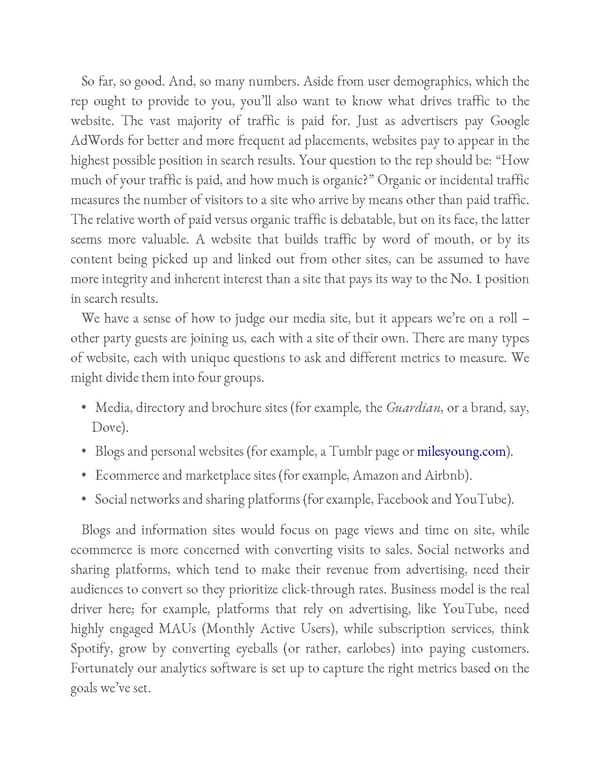So far, so good. And, so many numbers. Aside from user demographics, which the rep ought to provide to you, you’ll also want to know what drives traffic to the website. The vast majority of traffic is paid for. Just as advertisers pay Google AdWords for better and more frequent ad placements, websites pay to appear in the highest possible position in search results. Your question to the rep should be: “How much of your traffic is paid, and how much is organic?” Organic or incidental traffic measures the number of visitors to a site who arrive by means other than paid traffic. The relative worth of paid versus organic traffic is debatable, but on its face, the latter seems more valuable. A website that builds traffic by word of mouth, or by its content being picked up and linked out from other sites, can be assumed to have more integrity and inherent interest than a site that pays its way to the No. 1 position in search results. We have a sense of how to judge our media site, but it appears we’re on a roll – other party guests are joining us, each with a site of their own. There are many types of website, each with unique questions to ask and different metrics to measure. We might divide them into four groups. • Media, directory and brochure sites (for example, the Guardian, or a brand, say, Dove). • Blogs and personal websites (for example, a Tumblr page or milesyoung.com). • Ecommerce and marketplace sites (for example, Amazon and Airbnb). • Social networks and sharing platforms (for example, Facebook and YouTube). Blogs and information sites would focus on page views and time on site, while ecommerce is more concerned with converting visits to sales. Social networks and sharing platforms, which tend to make their revenue from advertising, need their audiences to convert so they prioritize click-through rates. Business model is the real driver here; for example, platforms that rely on advertising, like YouTube, need highly engaged MAUs (Monthly Active Users), while subscription services, think Spotify, grow by converting eyeballs (or rather, earlobes) into paying customers. Fortunately our analytics software is set up to capture the right metrics based on the goals we’ve set.
 Ogilvy on Advertising in the Digital Age Page 244 Page 246
Ogilvy on Advertising in the Digital Age Page 244 Page 246